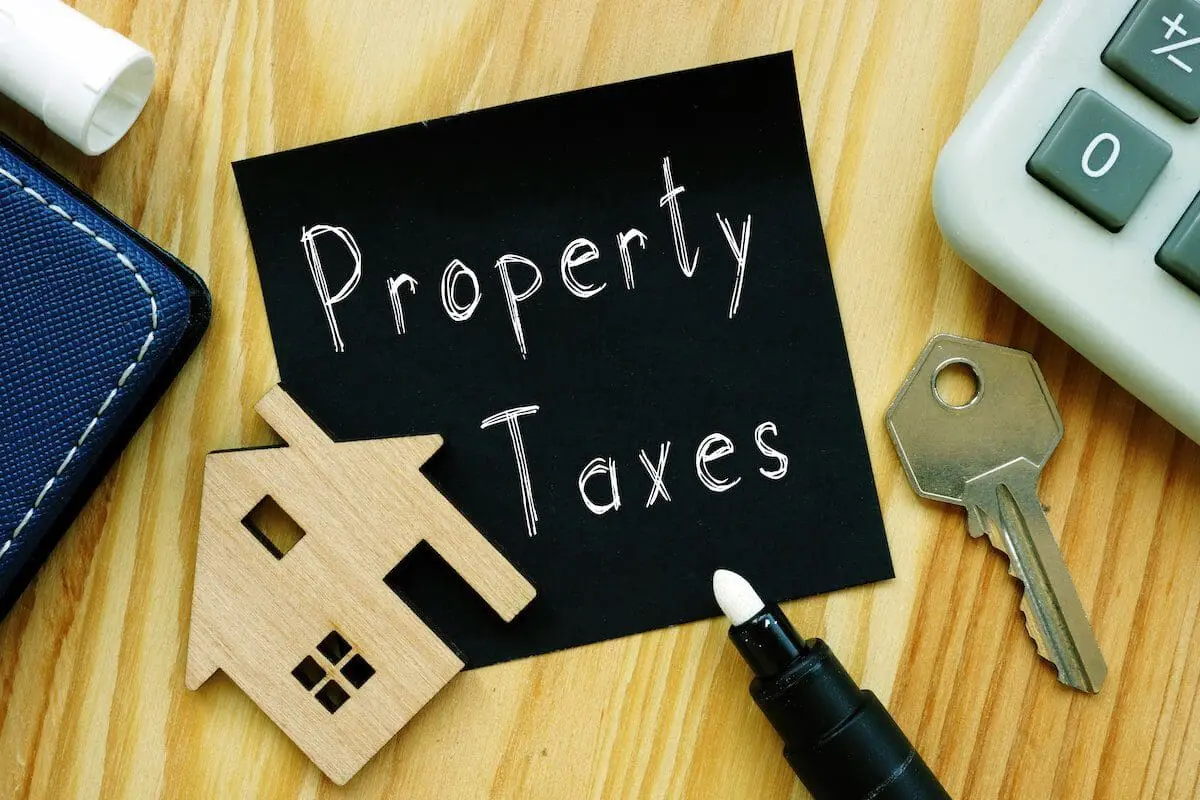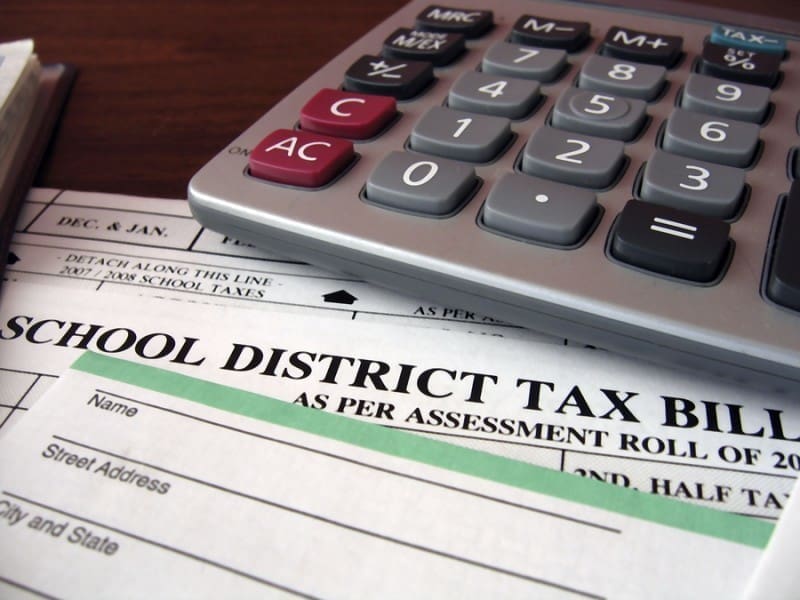Collin Strong, a grassroots organization in Collin County whose mission is to “educate the public, activate a grassroots network, & promote candidates and causes,” has been holding a series of property tax protest seminars.
In the seminars, led by Collin Strong President Brian Newman, homeowners are equipped with step-by-step actions they can take to fight their rising property tax bills. Texas Scorecard attended the organization’s April 29 presentation.
While tailored for Collin County, Newman explained the only difference homeowners in other counties will experience will be the deadlines to protest.
“For the bigger counties, it’s probably going to be May 17,” said Collin County Commissioner Darrell Hale, who was also there. “Smaller counties will probably push it out a little bit longer.”
Local Elections
One step they recommend to fight rising property taxes is electing local officials who will adopt the “no-new-revenue rate.” (As explained by city officials in a previous interview, your property tax bills are set when your local governments take the taxable value of your property and adopt the tax rate that will take the amount of your money they need to spend what they’ve put in the budget.)
What the no-new-revenue rate does is keep property tax bills in the aggregate stable year to year, a move Colleyville Mayor Richard Newton endorses.
“If your property value goes up 6 percent, [local elected officials] can actually lower your tax rate 6 percent and still get the same amount of money from you,” he told Texas Scorecard. “I would recommend that you ask your local officials to set that tax rate.”
Protesting Appraisals
As Collin Strong showed in their presentation, the other side of the battle is a homeowner protesting the value set by their local appraisal district.
The process starts when you have received notice of your home’s appraised value. Newman says if you haven’t received yours yet, you should be able to find it online at your appraisal district’s website. Be sure to contact your local appraisal district for the deadline to file a protest.
Collin Strong advises against telling your appraisal district what you think your house is worth before you go in person to protest. At this point, consider yourself in the preparation stage.
Newman recommends using a binder to store all of the information you gather. You’ll want it arranged in this order: your appraisal, comps from your real estate agent, photos of property improvements since the build, photos of property repairs needed, then estimates for each repair.
It seems like the years we do the binder are the years where we have more success.
Review Details
You’ll want to review the details for your property on your appraisal district’s website. “You’re going through that sheet and making sure that everything on it matches up to what you know about your property,” Newman said. “If they have a pool or something like that on there and you don’t have a pool, that’s something you need to make a note of.”
Verify that your exemptions are correct and take note of your property’s classification. You’ll also want to make sure the district has “accurately described” any improvements or amenities on your property. “Extra amenities drive up [the] value on your home, and assessors don’t know any changes you’ve made.”
“Make sure that even obscure stuff is on there, like easements or utility stuff that actually is not usable property and isn’t really yours,” Hale said. “You can actually get them to credit off easements if across a four-year property, there are telephone boxes and things like that taking up space or if there’s … a bigger easement that you have no ability to build any permanent structures over.”
Compare Assessed Values
Compare the assessed value of about three to five homes in your immediate neighborhood that have the same classification as your home and have similar comps. “If you’re in a … suburban community and you have a certain number of different types of models in your neighborhood, you’ll be looking for a home that is similar to your model,” Newman said. “The appraisers say they don’t give a lot of weight to that if there are differences, but it’s a great place for you to start just to see if the process has been fair.”
Hale said most protests will be fought by using market value, which he described as “whenever something is sold on the open market and you have buyers and sellers open-forum bidding on it.”
In Collin County, homeowners can go to the Collin Central Appraisal District website and use their address to check their neighbors’ assessments. You can contact your appraisal district if their website does not offer the same feature.
Compare Sales Prices
Check the recent sales prices of at least three homes similar to yours that are close by. Have a licensed real estate broker provide you with a Broker Price Option (BPO) or a Comparable Market Analysis (CMA). “These comps are not going to be the assessed value,” Newman said. “These comps are going to be the sales that happened in 2020, and you’re going to get this from a real estate agent. These are provided free.”
North Texas realtor Chandler Crouch offers advice based on his experience in Tarrant County, noting that it may not be applicable everywhere. “Last time I checked, they can provide data plus or minus two years of the appraisal date,” he said. “That’s what they’re legally allowed to do. Most realtors can go back to the previous January 1.”
Make sure not to use comps of houses that are far away or distressed properties like foreclosures or short sales. Do note repairs your home needs in order to restore its original construction standard. “Start looking around for cracks in masonry, fogged-up windows, rusty HVAC, fences that have rotted or rusted out,” Newman explained, emphasizing the decay had to occur in 2020.
“Take photos close up and far away.” Newman also advises taking pictures from the corners of your property to prove what is or is not included on the property and to support your argument if the comps the appraisal district used are not comparable with your property.
Be sure to use estimates from licensed or experienced contractors—not for maintenance projects, just what is needed to restore your home’s original construction standard. “Landscaping [and] plants don’t count.”
Appraisal District’s Comparable Sales Data
Get the comparable sales data your appraisal district used when calculating your appraised value; they typically use anywhere from three to five comparable properties, and you have a right to see them. “When you call for those comps, you don’t want to tell them what you think your property is really worth,” Newman advised, “even if they ask for it.”
If you see anything disputable, that’s when you move on to protesting your appraisal.
Informal Protest, Formal, or Both?
At this stage, Newman says you have two options. You can walk in and do an informal protest, or you can schedule a formal protest with the Appraisal Review Board.
“I like the informal review best,” Newman said. “I’ve never had success with the ARB.”
If you would rather do a formal protest, file a “Property Appraisal—Notice of Protest” using Form 50-132 or Page 2 of your property appraisal notice. After you file, you’ll be notified when your protest hearing will be; the hearing will likely be scheduled in mid-June. Check either one or both options of “Value is over market value” or “Value is unequal compared to other properties.”
If you’ve not asked for or received comps from the appraisal district, you’ll have to go to the district in person to obtain them. The district is required to provide this information no later than 14 days before your scheduled hearing. Again, don’t give your appraisal district your opinion of your property’s value or any of your evidence before the hearing.
Informal protests are walk-ins and the lines can be long, so arrive early. Collin Strong also recommends coming close to the protest deadline; appraisers are more likely to be tired of hearings as the deadline approaches.
Dress in business casual attire. Bring the binder of evidence you prepared: comps, estimates from contractors for repairs, and photographs of all the problems at your home.
“This is the one time out of the year where you can’t be gushing about how in love you are with your dream home,” he cautioned. “This is when you’re focused on the warts of your home.”
As soon as you walk into the informal hearing, after greeting each other, immediately ask to see the appraiser’s comps and how they came to your home’s value. Patiently listen as they show you and try to explain. “When they come out with whatever their reasons are, you’ll respond: ‘I can never sell it for that much,’” Newman said. Then you walk them through your binder.
If things go well and you get a good amount taken off of your appraisal, sign and say thank you. If things don’t go in your favor, don’t sign on the dotted line. Instead, schedule a formal hearing.
You’re not required to sign anything. You just say, “We respectfully disagree, and we will be going to the ARB.”
Hale said ARBs can’t refuse to do an in-person hearing. “There’s actually a state attorney general opinion, it’s Ken Paxton 0307, that states that it is against the law for them to deny you an Appraisal Review Board,” Hale said. “They’re supposed to allow you to have a formal hearing face to face.”
“We feel face to face is better because it’s harder to say no to somebody,” Newman added.
The Appraisal Review Board is made up of about four fellow citizens who are typically appraisers or in real estate. In the formal hearing, you’ll be sworn in. Again, come dressed in business or business casual attire. Present your evidence, and the appraisal district will present theirs. You’re allowed one rebuttal.
Afterward, the ARB will make a decision. If you don’t agree with it, you have one last option: appeal to the state district court in the county where your house is, go to binding arbitration, or go to the State Office of Administrative Hearings (SOAH). Collin Strong cautions you’ll need a lawyer, and the entire appeal process can be expensive and time-consuming. Hale thinks it is only worth it if your property is worth a minimum of $1.5 million.
Once this process is complete, you have to start it all over again next year.





